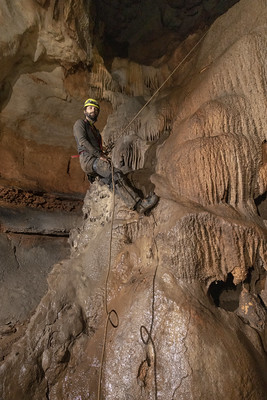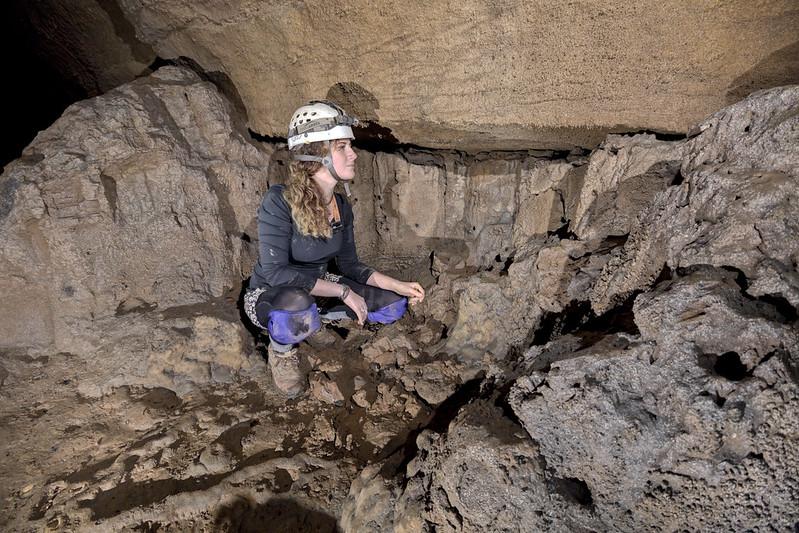The Role of Grottos in the Caving Community
 Grottos (caving clubs) are internal organizations of the National Speleological Society (NSS). When I first discovered caving, it was through the Upper Cumberland Grotto (UCG). Since then, I have been involved in caving and our community. I have seen the UCG's membership wax and wane a few times, and at low points I have at times struggled with what the role of a grotto is in the digital era. Below are my thoughts.
Grottos (caving clubs) are internal organizations of the National Speleological Society (NSS). When I first discovered caving, it was through the Upper Cumberland Grotto (UCG). Since then, I have been involved in caving and our community. I have seen the UCG's membership wax and wane a few times, and at low points I have at times struggled with what the role of a grotto is in the digital era. Below are my thoughts.Historically, a grotto was a place where cavers could meet other like-minded individuals. We are now well into the age of the Internet and few people have trouble identifying who other cavers are (it's easy, they are wearing a muddy helmet in all their social media avatars). The need to have aformalized group is not as important as it once was. This has created a crisis of identity for caving clubs across the United States. Aged leadership, full of institutional and historic knowledge, and perhaps not savy with social media is disconnected from the youth. The strong-willed youth defy their elders and disregard their decades of experience so that they can do things their own way. Is there any way to reconcile the views of both groups?
"The need to have a formalized group is not as important as it once was. This has created a crisis of identity for caving clubs across the United States."
What follows is a conceptualized "pipeline" to becoming a caver.
1 - Safety and Conservation
The first and most important role a grotto plays is intercepting would-be cavers early in their caving career. We aren't born knowing what gear works best, nor are we born with a conservation ethic appropriate to the sensitive and alien nature of caves. Those two things, safety and conservation, should be the grotto's primary goal. This is where our elders strength is. Though gear is always changing, the insights of the older generation will save the youth the time, pain, and money burden of poorly selected gear. The ethic of ethic of conservation and exploration are sometimes at odds. How do we manage this? Again, a lifetime of exeperience advises.
If you'll forgive the metaphor from someone raised in a southern household, grottos should be like good churches. They should be welcoming to all people, especially those who aren't practicing good safety or conservation ethics. It is within them that we have the greatest opportunity to affect positive change. I think that it's important to create an inclusive environment open to people of all backgrounds, and at all points on their journey through live. I like to take a soft approach to dealing with new people, it is easy to give the wrong impression about caving by being heavy handed.
2 - Networking and Community
The second goal of a grotto should be in helping people network within our community. Here are some basic tips:
This is where I find most people fall out of grottos. They show up, learn a little about safety and conservation, go on a few grotto led cave trips, and drop out. For whatever reason they failed to make a connection with anyone in the grotto. There are plenty of reasons this happens, and not all of them are the grottos fault. However, an awareness of this issue could help prevent someone from leaving who may have made a good caver.
3 - Help People Become Cavers
This leads to the third and final goal of grottos. We should be encouraging members to contribute to the caving community. This is where young cavers can shine with their energy and enthusiam. They can do this through:
- Writing, design, layout, art Most caving communities have print publications. The Tennessee Cave Survey (TCS) has an annual publication, and the National Speleological Society (NSS) has monthly publications. You may want to write a trip report about a particularly fun (or gruesome) caving trip you went on. Or maybe you want to write a blog post about caving.
- Photography Writing isn't the only way to document something. Below is an example of a recently documented saltpeter operation, date unknown.
- Surveying Caves need maps. Be one of the people who makes that happen. Surveying is team work, and it takes a long time to produce a good map, especially if the cave is large. If you know AutoCad, ArcMap, or Illustrator, then you're off to a good start in working with maps and map data.
- Ridge-walking Take a GPS into the field and find some new caves! Be sure to document what you're doing, otherwise you're just screwing around.
- Volunteering Volunteering takes many forms. It may be that you are taking the time to clean up a trashed cave. Or it may be that you took some time to talk to a 1st grade class about caving.
- Leading It's not just the grotto chair that leads. Most cave trips have a leader. If you want to lead a trip, learn a cave and invite the grotto on a trip. Leading isn't always about being inside the cave. Leading may be fostering a spirit of inclusiveness in the grotto. Leading may be taking the time to talk to each of the members at a grotto meeting. Leading may be calling the folks who didn't go to the meeting and checking in on them.
- Administration Administration is arguably the least glamorous of things one can do in caving, but it's necessary. We all enjoy having our treasury balanced, our minutes kept, our meetings led, and events planned.
You can make cool stickers to share with your caving friends, or help design a grotto's logo or t-shirt.




I hope you found this useful. Consider reading the next entry in this series, The Role of Grottos in the Outside Community.
Comments